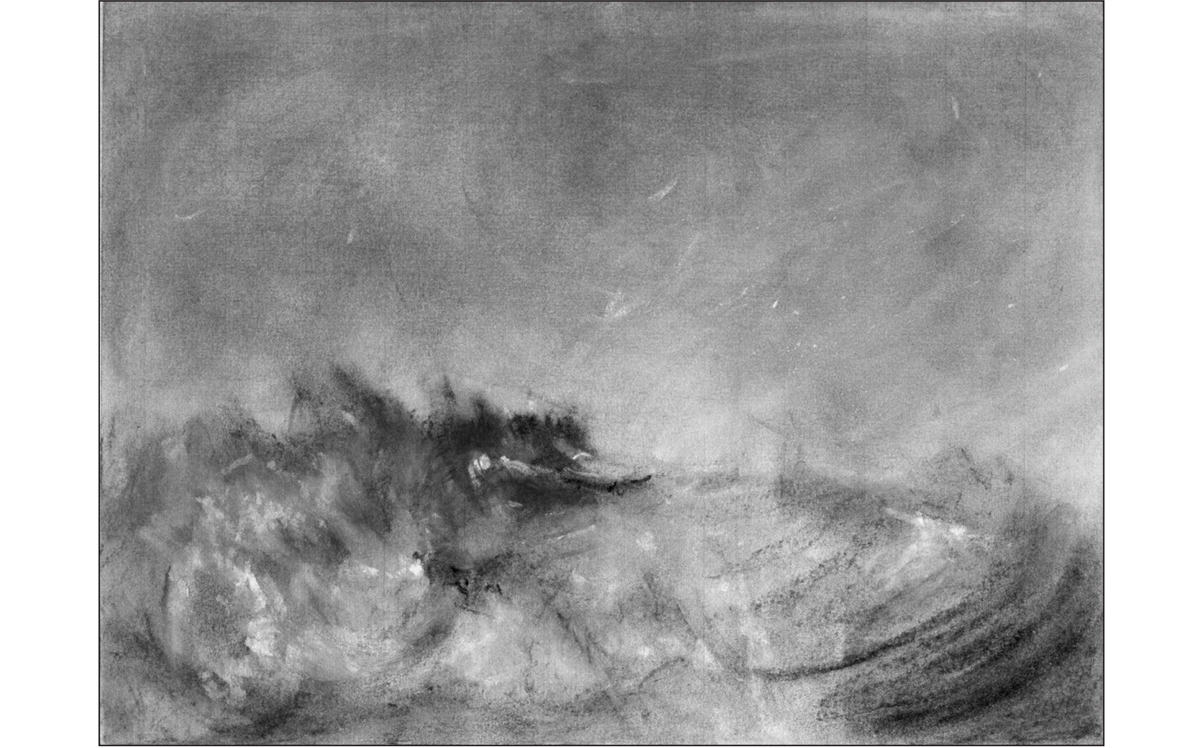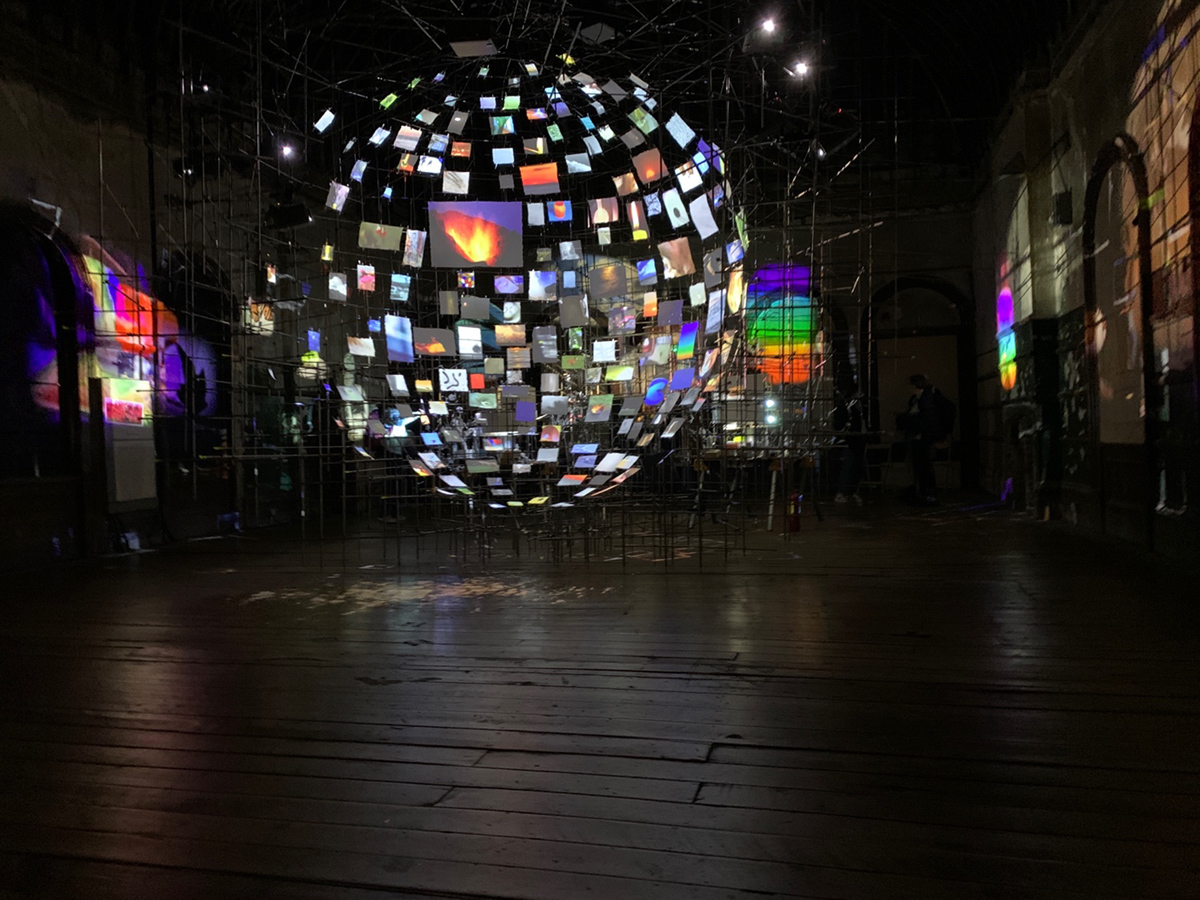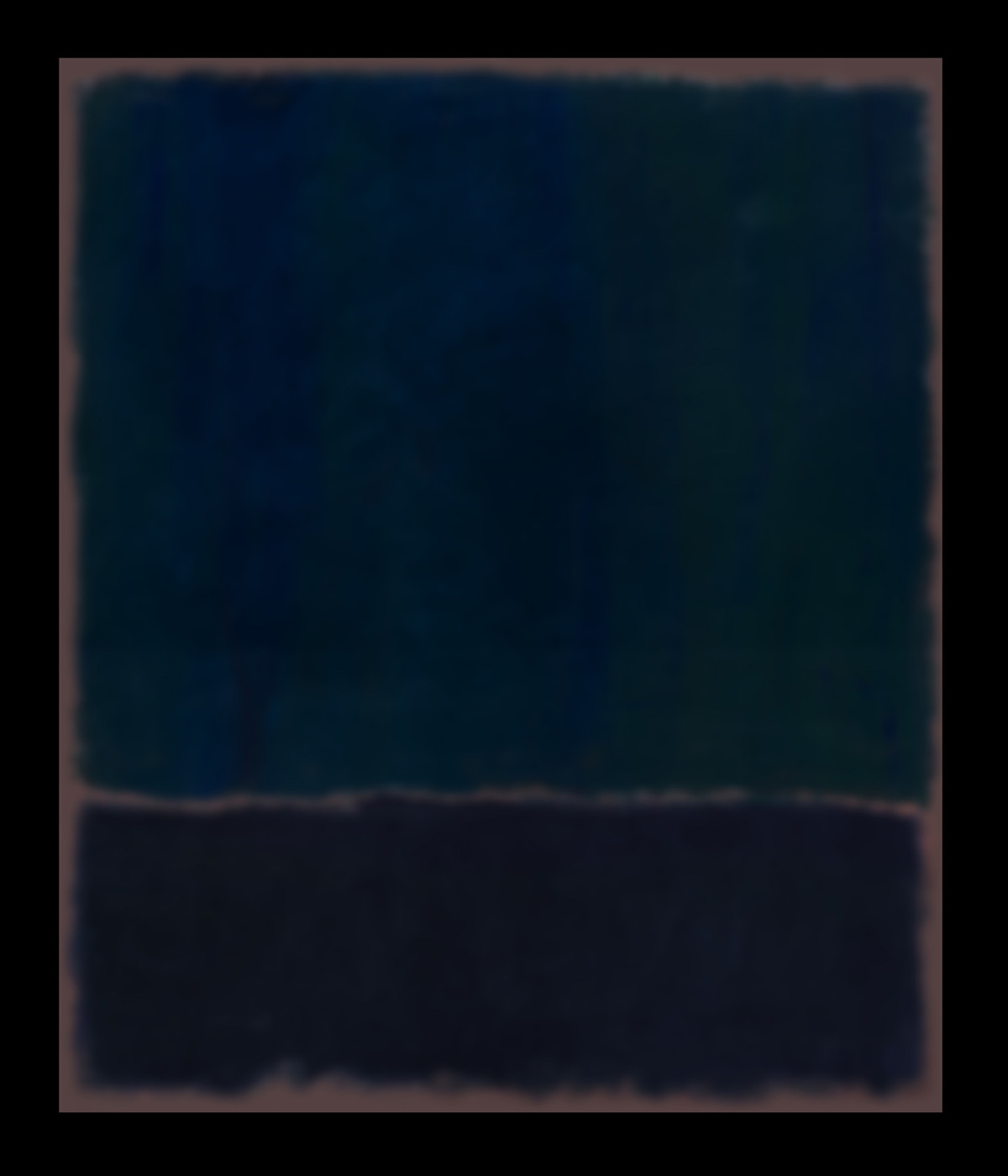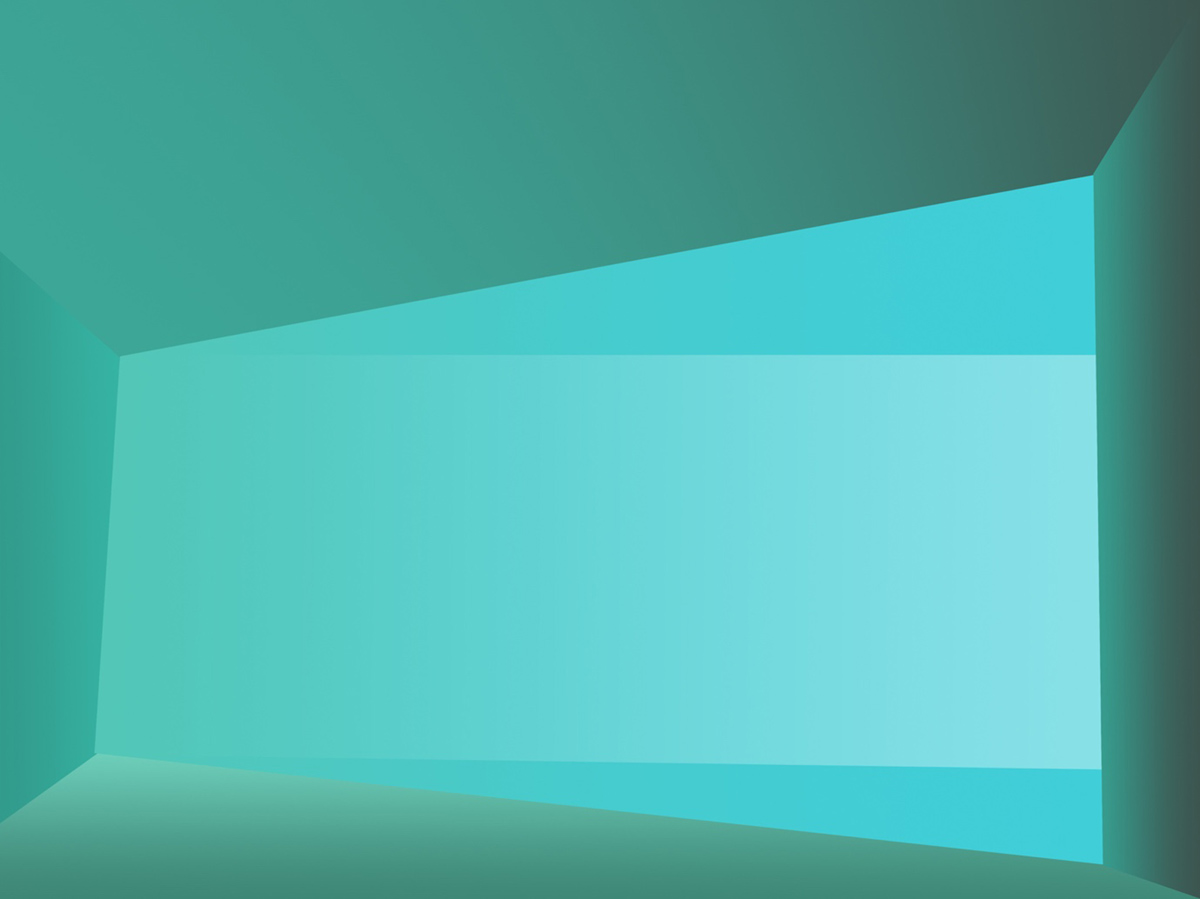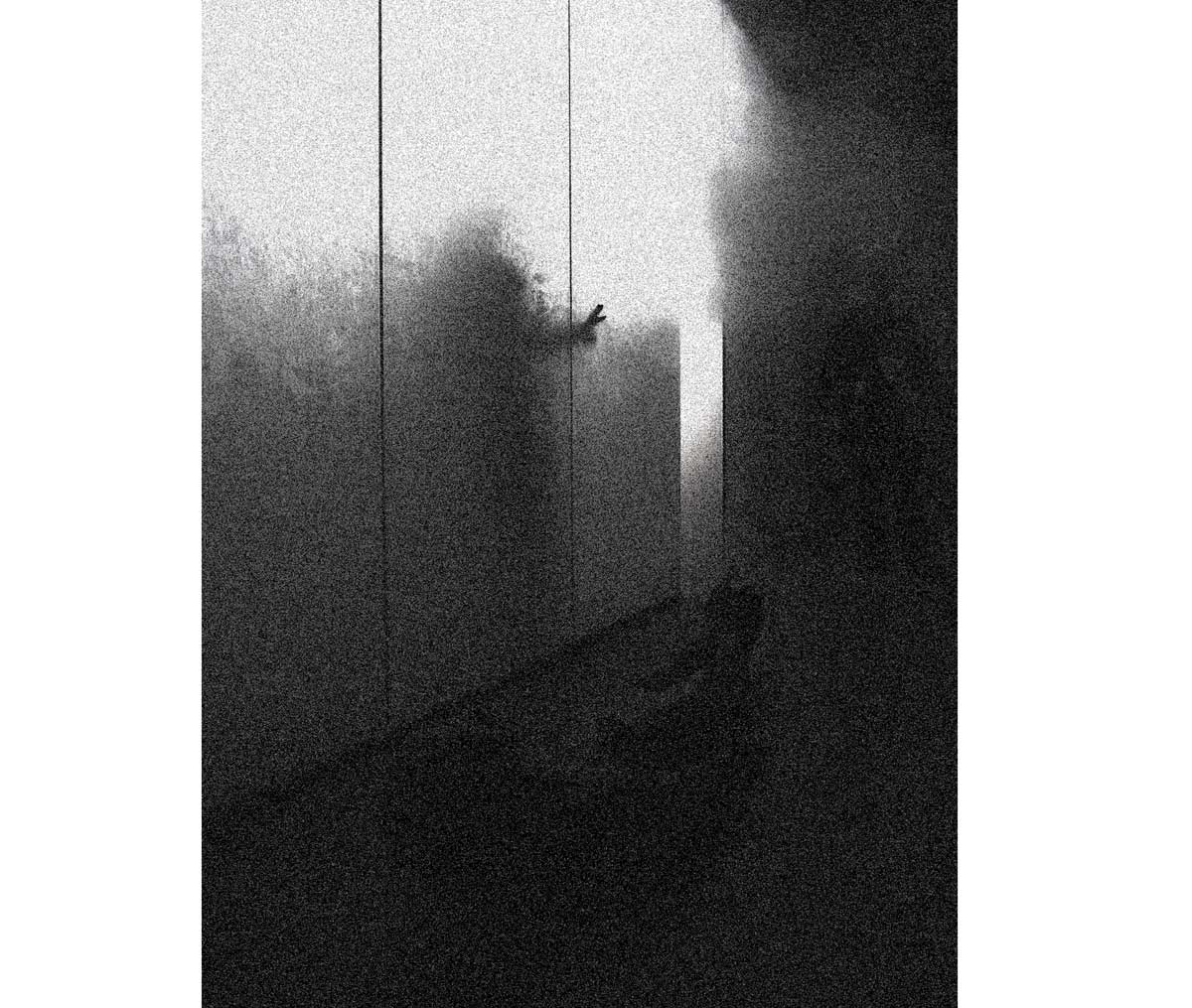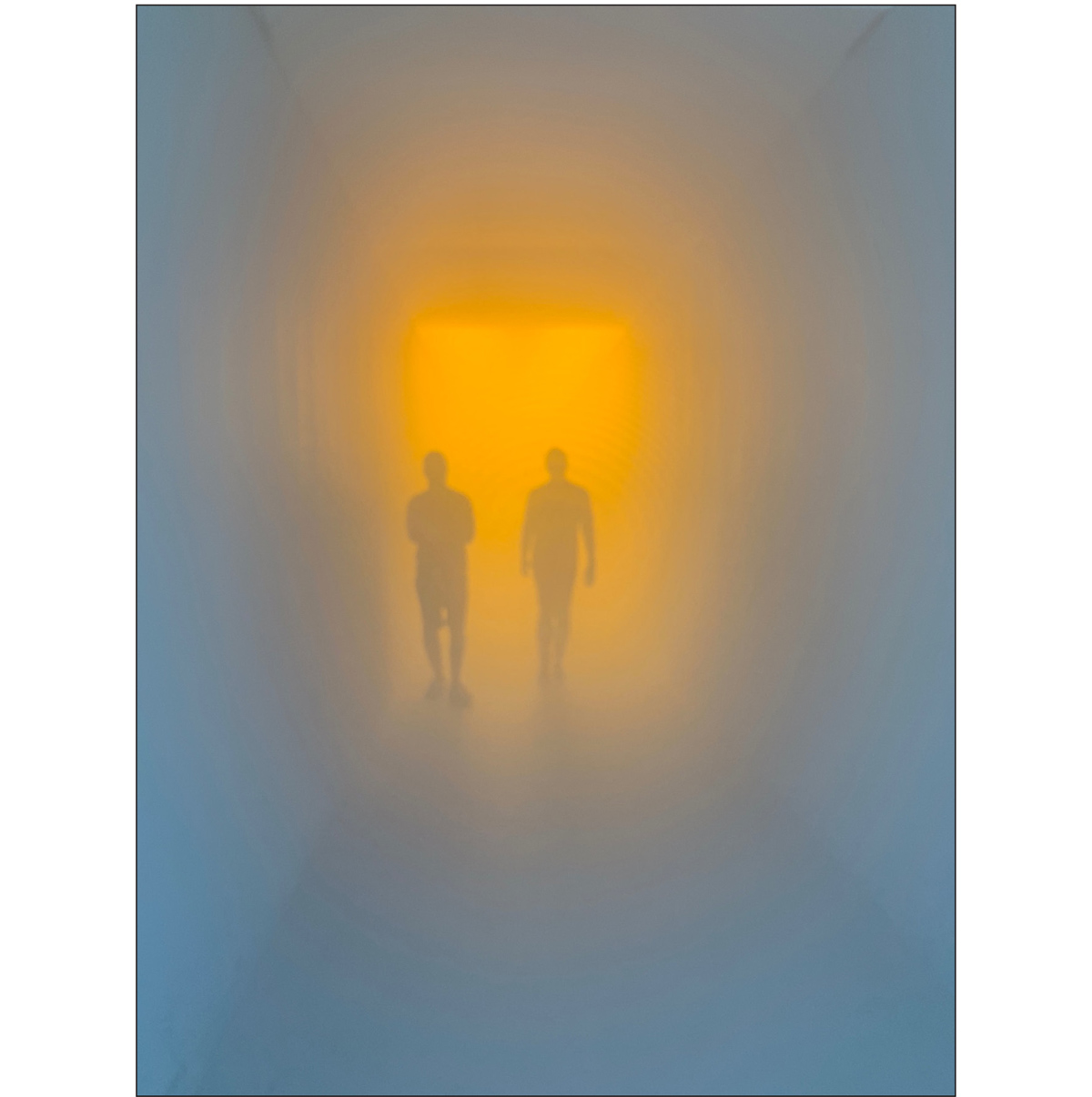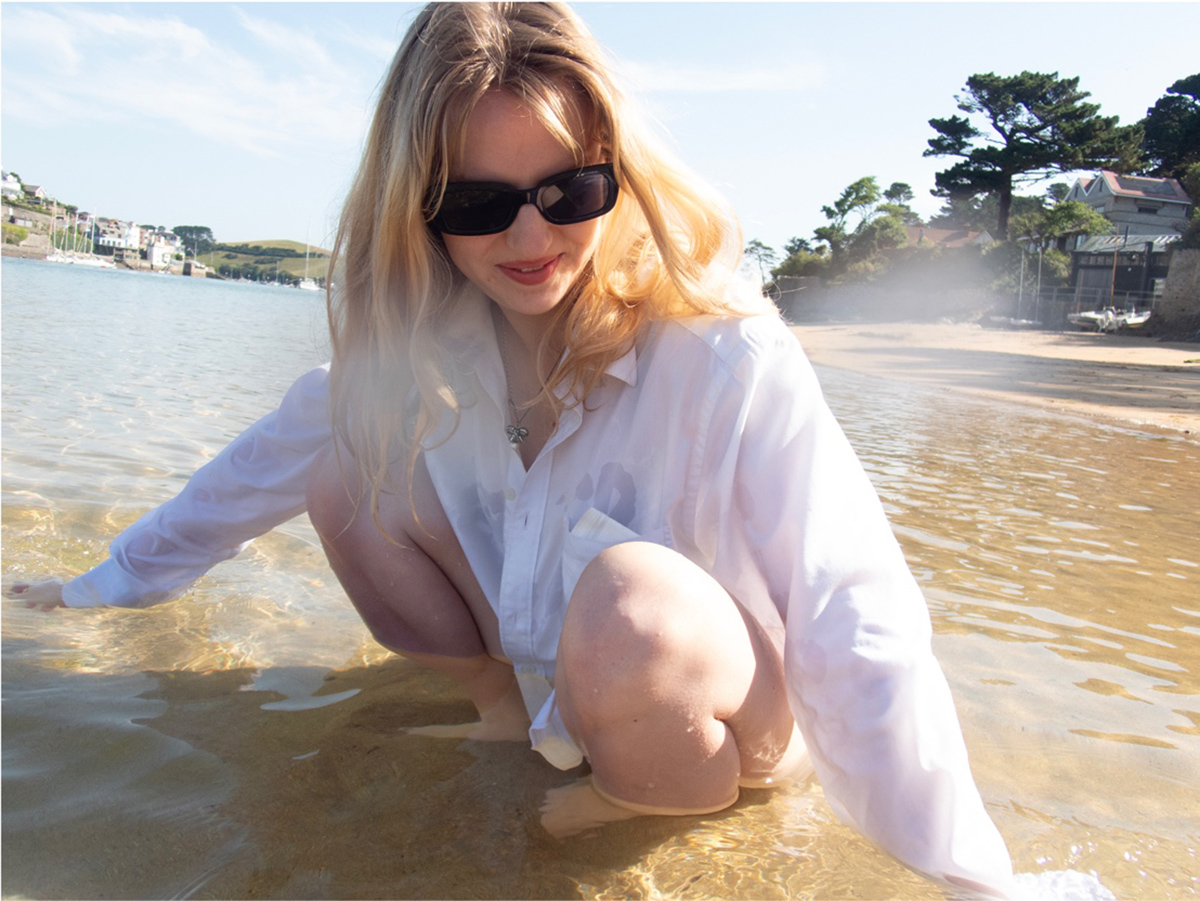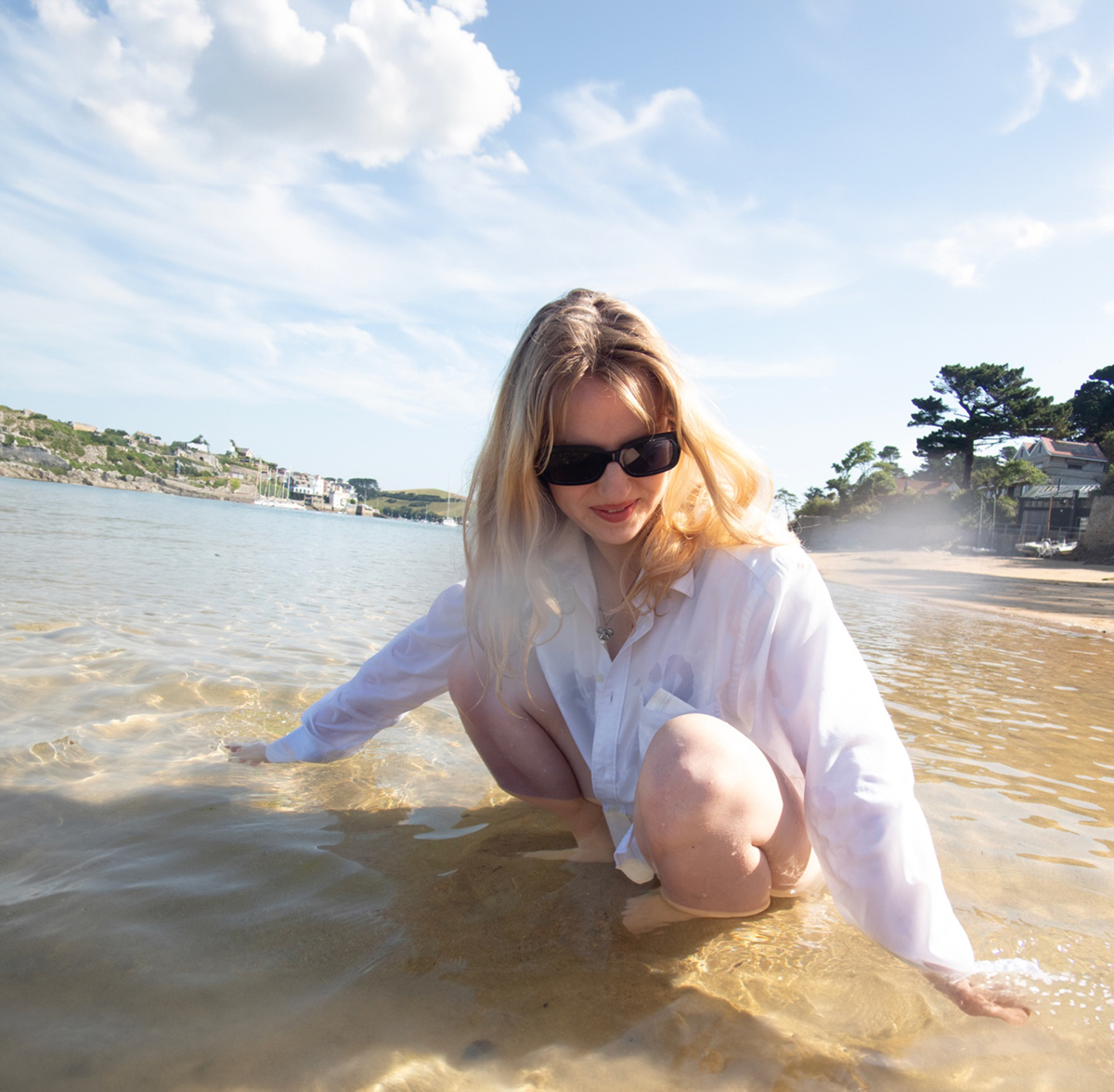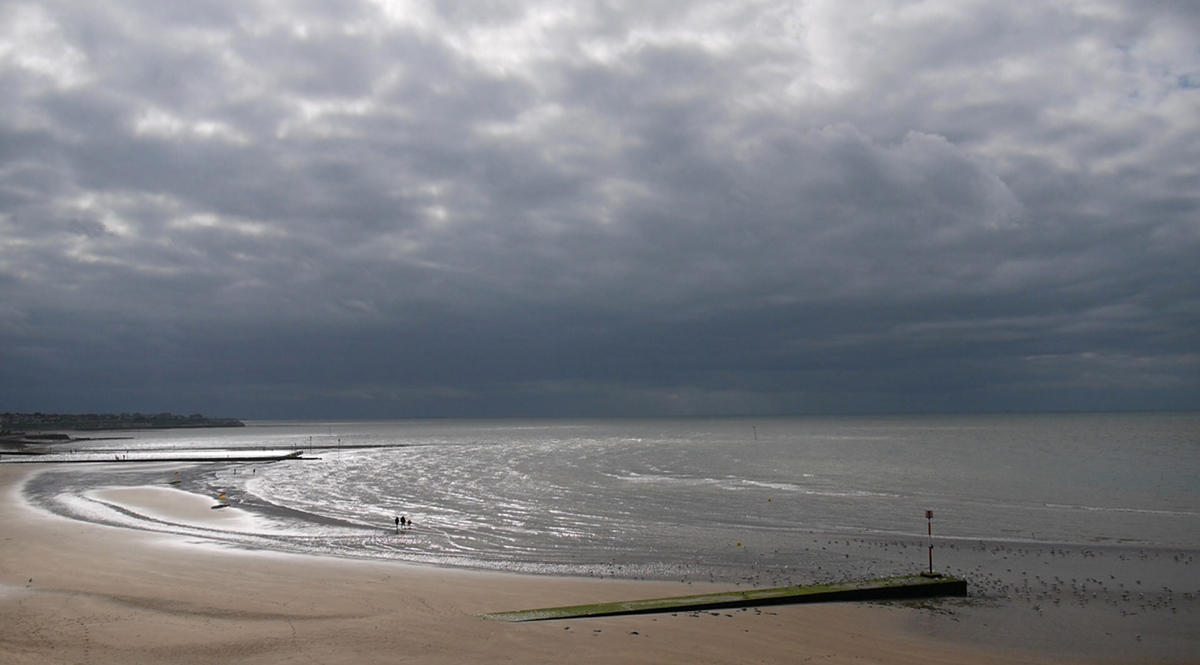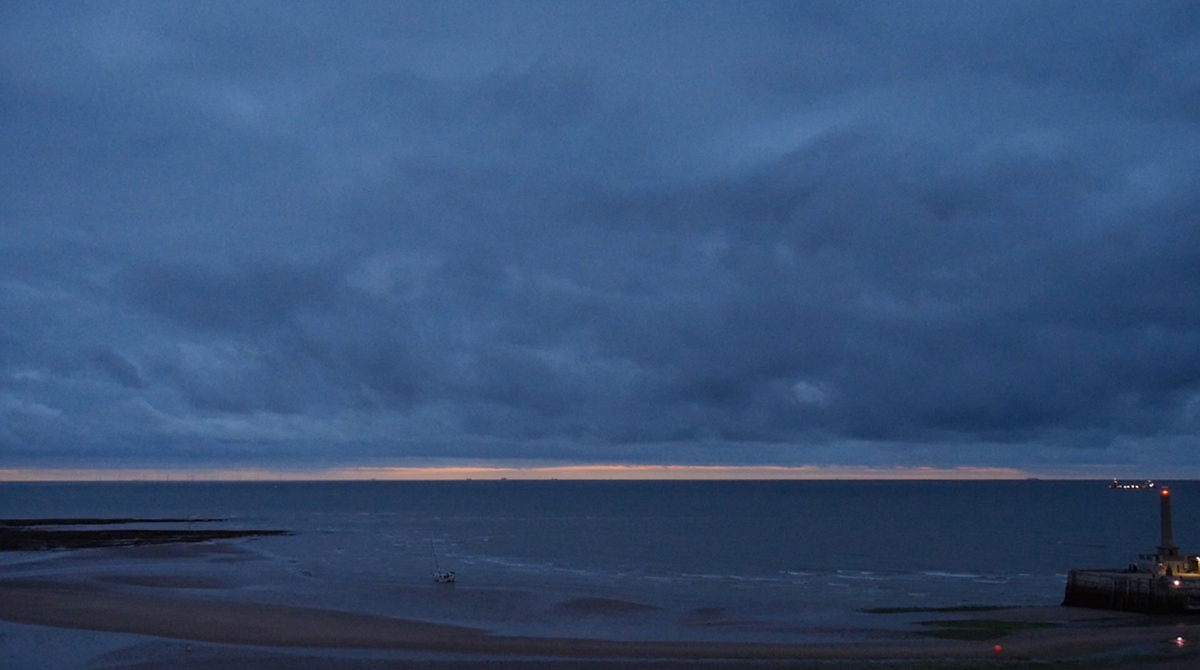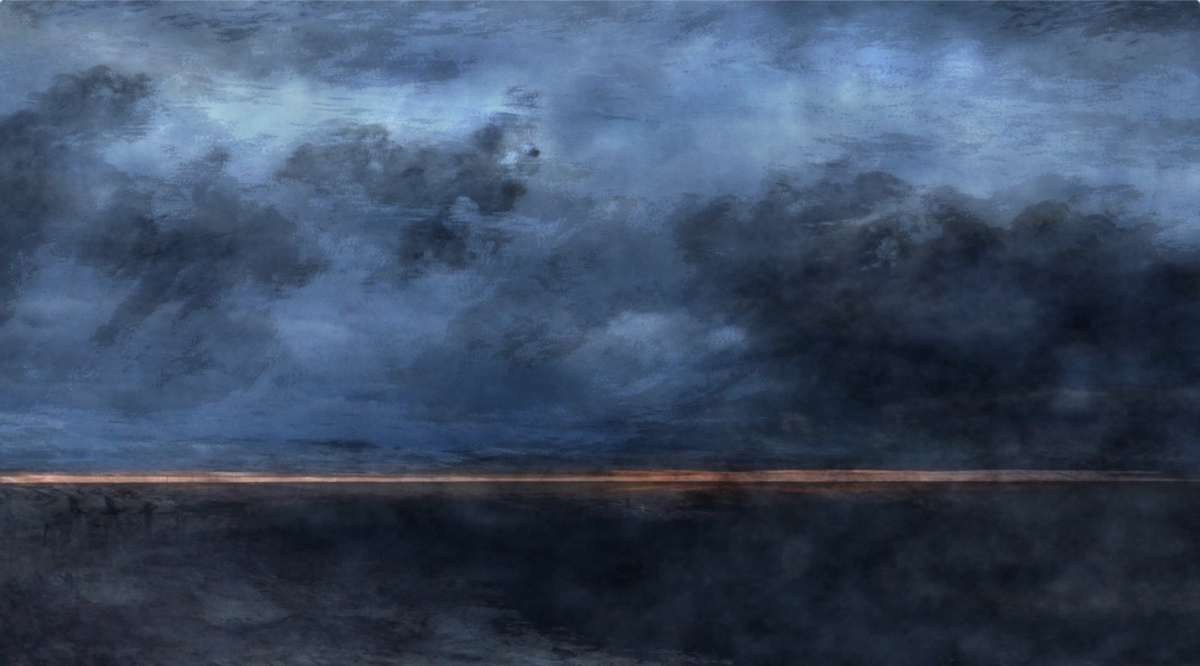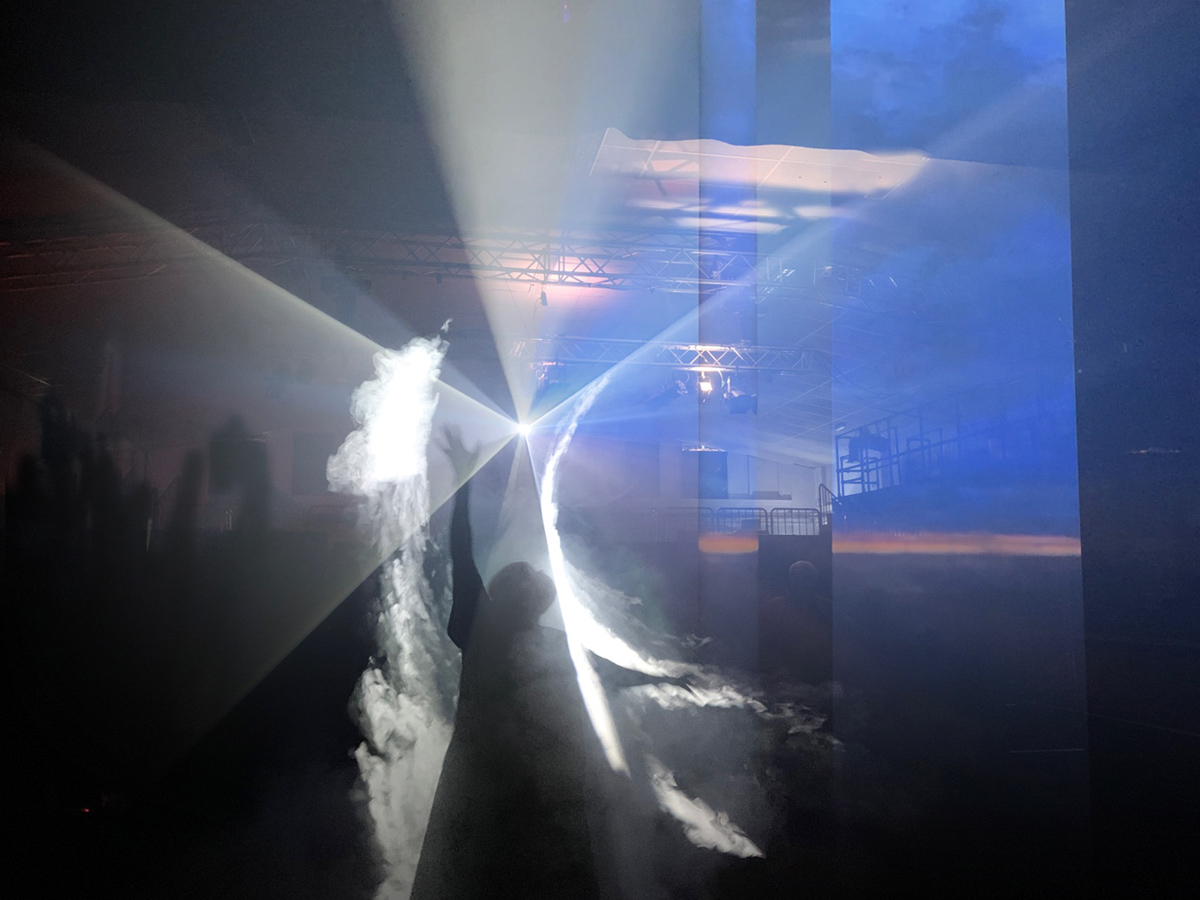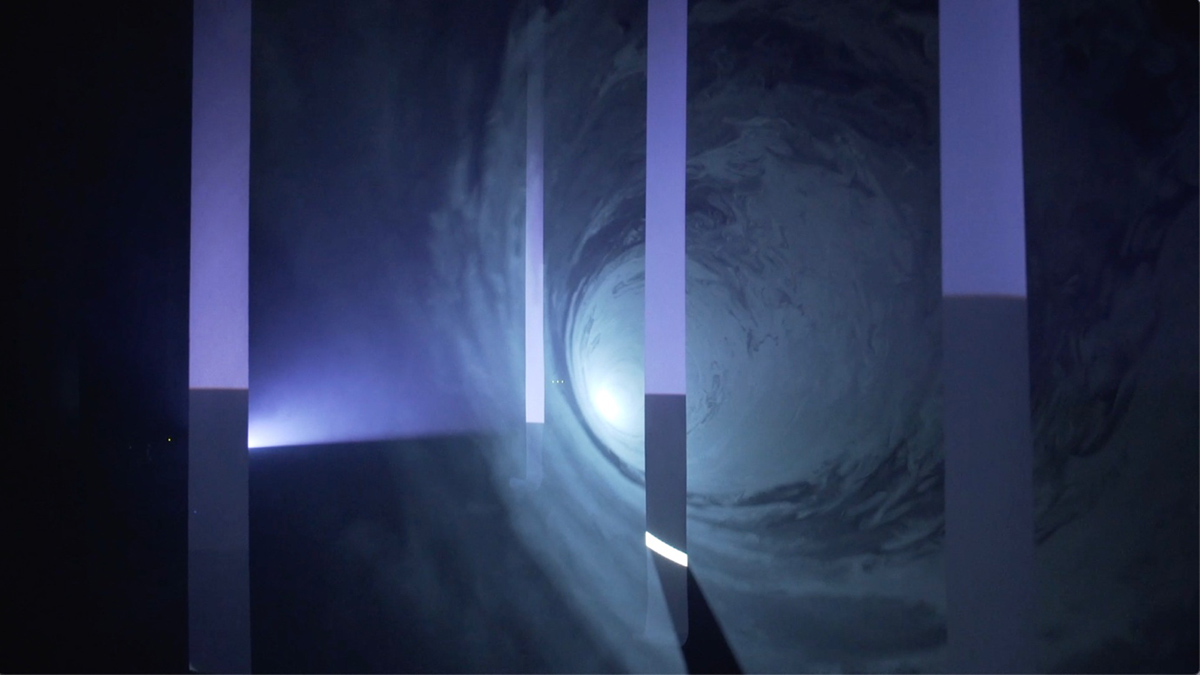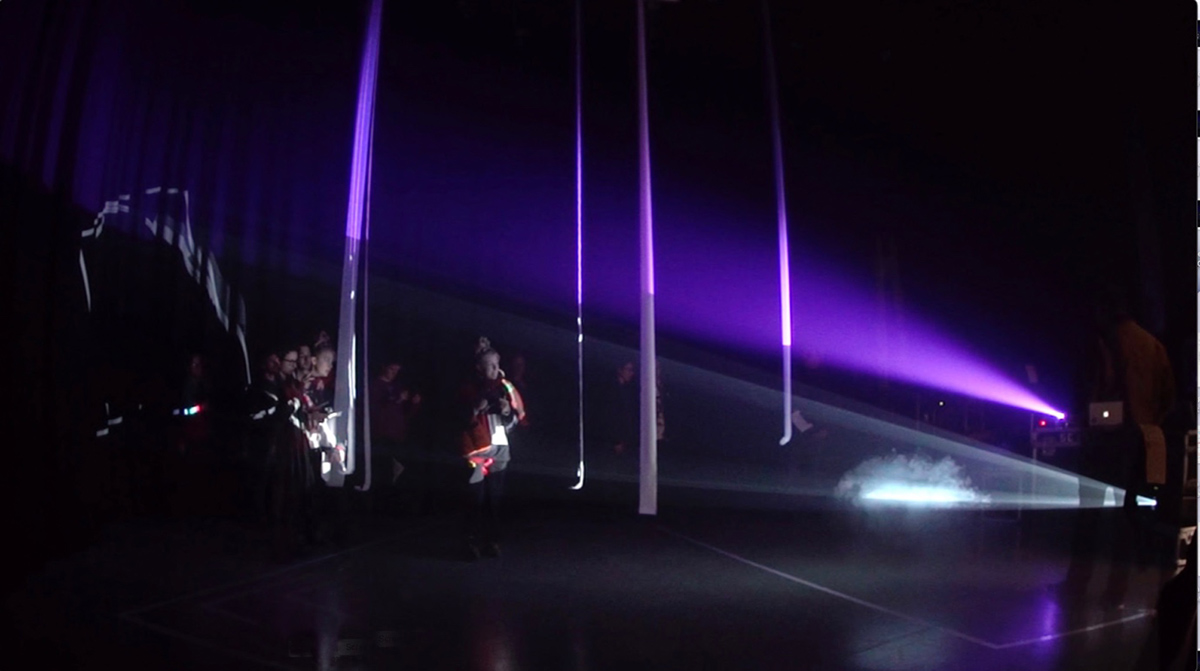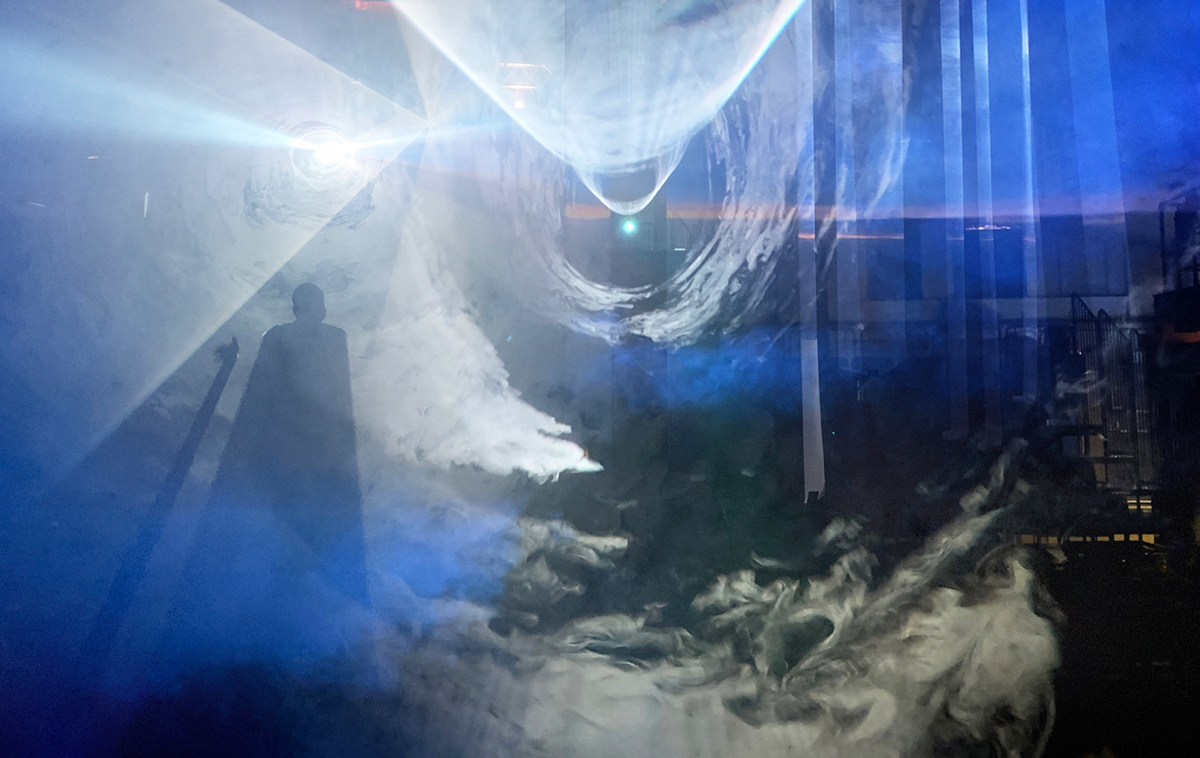Introduction
Since the beginnings of photography, it has been possible to seamlessly manipulate images and fool the viewer. Whereas the seamless manipulation visual imagery used to require creative and technical skills and knowledge, Artificial Intelligence (AI) allows anyone to do this by clicking on AI presented choices. As is often the case with current AI, it is very strong on style. For example, based on my years’ of industry experience and subsequently teaching these skills, human manipulation often gets shadows and reflections wrong but AI makes these entirely credible. Although there has long been awareness that photographs can be seamlessly manipulated, we can still be swayed by what we see in photographs as if they are a true index of what was captured of the real world through a camera. The history of photography gives photographic images the weight of documentary evidence, and they can still be emotionally persuasive. Therefore, this newly ubiquitously available, extremely credible image manipulation is disruptive as we are aware that the validity and value of photographs presented digitally are now impossible to assess.
Emotional reactions to photographs are increased through our Westernised cultural paradigm that gives dominance to our visual sense above all others. As the psychologist Fabian Hutmacher states: ‘the impression that vision is our most important sensory modality flows partially, at least, from the fact that contemporary Western societies are visual societies’ (2019: np). There is concern about the dominance of vision and the suppression of other senses in the teaching of art and architecture, as the architect Juhani Pallasmaa suggests (2012). This ignores the significance of the other senses, especially the tactile. As the anthropologist Ashley Montagu states:
The skin, like a cloak, covers us all over, the oldest and the most sensitive of our organs, our first medium of communication, and our most efficient of protectors. The whole body is covered by skin… Touch is the parent of our eyes, ears, nose, and mouth. It is the sense which became differentiated into the others, a fact that seems to be recognized in the age-old evaluation of touch as “the mother of the senses.” (1978: 1)
How best to navigate the disruption this new mode of image manipulation causes? Education is key. In this paper, ‘dissolving’ the horizon line is aligned to highlighting unconscious visual dominance, because the embodied experience of seeing when there is no horizon line emphasizes our non-visual senses. Furthermore, ‘dissolving’ the line that differentiates up from down takes us into a mode of seeing that is stripped of this fundamental binary division, opening up a different awareness.
My methodology is autoethnographic. I undertake a double role: as researcher and research subject, with the aim of both revealing and navigating the disruption I feel in the face of AI image manipulation. I hope that others will find my practice is enabling. Autoethnography is, as the educator Sadruddin Bahadur Qutoshi suggests:
an ‘un-locker’ that opens hidden windows to view unseen things; … a challenger who fights to disrupt canonical ways of seeing, believing and doing things as taken for granted; an enabler that develops capacities in self/others;
(2015: 162) [Italics in the original]
In this paper, ‘dissolving’ the horizon line is aligned to phenomenology and embodiment, which are reflected on as an approach to gaining an awareness of mind-in-body and body-in-mind as we see. Visual reduction through painterly veils of fog and installations with atmospheric fog heightening the non-visual senses are investigated and contextualized with theories of visual perception and philosophy. Hearing organizing vision: grounding oneself in a flood of visual images through a sonic pulse is articulated. I reflect on my personal experiences of artists’ work and my own practice. This paper gives a case study of some of the latest manipulation tools powered by AI at work.
Key findings from varied approaches in my practice are drawn together in the hope that this will encourage further artistic research in this area. These include collaging photographs and video to make manipulation highly visible, as a reminder to viewers of image manipulation and the materiality of photographs and video. Considerations when creating installations that build awareness of senses beyond the visual by integrating fog and projected imagery with no one fixed screen, thus encouraging walking through the installation and awareness of multiple views are articulated.
A Phenomenological View of the Horizon Line
Within visually dominated lives the horizon line is a fundamental line that divides up from down as we navigate through the world. The Renaissance picture plane assumes verticality and a horizon line, as the philosopher and novelist John Cowper Powys suggests: ‘[a] line of demarcation separating the horizontal perspective of the one from the perpendicular perspective of the other’ (2009: 98). All fixed screen imagery harks back to the Renaissance picture plane. Vertical pictures and screens refer to the natural world, to us having an experience of nature. Normally we are upright as we gather data about our surroundings. Vertical pictures and screens give us, as the art historian Leo Steinberg writes: ‘[a] glimpse of the world …evoke a prior optical event’ (1968: np). They are hung on walls; they face our upright human posture.
The absence of a horizon line challenges visually led senses. The horizon line provides a binary contextualization, dividing up from down. The absence of this demarcation forces us to navigate through space differently, on a moment-by-moment basis, entirely in the present moment. Removing this anchor to the world highlights our visual dependency as our visual disorientation invokes our other senses. ‘Dissolving’ the horizon line can be richly discombobulating, the feeling of disorientation acting as a cue to become aware of a fully embodied vision with a multiplicity of possible resolutions or meanings. The experience seems to bring us into a mode of perception diametrically opposite to quickly consuming images, all too often on a binary: ‘like’ or ‘not like’, or ‘true’ ‘must be fake’, basis.
How best to ‘dissolve’ the horizon line? Immersion in the scene is a key aspect of this experience. As the film and media theorist Alison Griffiths states: ‘Bigness’ (2008: 9) is critical to immersion. Facing a hung picture or screen gives an immediate sense of human scale. Is the image taller or shorter than the viewer? If the viewer is, say, half a metre away from the image is their peripheral vision filled? Standing in front of the image itself is there a sense of being enveloped head-to-toe, of being immersed?
Standing close to Turner’s’ Rough Sea (Figure 1) gives a sense of being enveloped in the scene.
There is no horizon line. ‘He creates a viewpoint with no shoreline – the viewer does not have the safety of being on land. Turner compounds the effect by not defining the line of the horizon – leaving the viewer off-balance, moving with the sea and the light. …its effect is absolutely dynamic: it encapsulates turbulent movement; it does not still the moment.’
Being in a seascape is associated with immersive, even sublime, experiences that have inspired the philosopher Immanuel Kant and artists such as Joesph Mallord William Turner (Watkins 2020). Whereas, Kant defined the sense of being overwhelmed by nature as an experience of the sublime, the founder of psychoanalysis Sigmund Freud (1999) defined this ‘oceanic’ feeling as narcissism, an infantile state, in which nature is seen as an extension of self, there is no separation. He treats seeing as a sense separate from other senses and suggests its dominance. The philosopher Jean-François Lyotard posits Freud’s conception of space comes from the dominance he gives seeing; seeing that is the same as having a desire and that overrides reason.
seeing is desiring…. An essential deception: the dream, says Freud, makes use particularly of visual images. Seeing interferes with hearing and speaking, as desire interferes with understanding.
Lyotard also suggests that seeing seduces the viewer: ‘Cézanne’s prayer: that the familiar mountain disempower him, that it appear somewhere other than where the eye expects it and that in this way seduce him’ (Lyotard, Crome & Williams 2006: 46). This seduction suggests that we grasp the world not through active intentionality but passivity: ‘Seeing as an act rests upon a passive synthesis’ (Lyotard, Crome & Williams 2006: 44). In contrast the philosopher Maurice Merleau-Ponty’s theory of phenomenology gives active intentionality to the viewer and places the body (not just the eye) central to experience. His theory:
undermines the distinction between the subject and the object, with the body existing as both subject and object. Thus, his phenomenological conception always begins with the body; we perceive from within our bodies and the body is the agent of perception, the body is embedded within the world.
The philosopher Giles Deleuze further dissolves the distinction between the subject and the object, so that they form reversible parts of a unified thing: ‘the unity or reversibility of feeling and felt’ (Deleuze & Guattari 1994: 178). An artist who creates installations with atmospheres, Olafur Eliasson recognises Deleuze as one of his seminal influences. He states in an interview with Chris Gilbert (2004: np): ‘I use these ideas of seeing-yourself-sensing or sensing-yourself-seeing … I’m trying to put the body in the mind and the mind in the body’.
A phenomenological experience of loss of self into seascapes without a horizon line or in fog affects our sense of the ‘flow of time’ (Merleau-Ponty 2014) and we experience being in the present moment. The theorist and philosopher Roland Barthes differentiates our experience of temporality when experiencing the real-world or moving image is from the ‘astonishment’ (2000: 90) viewing a static photograph of a moment fixed in time. As the artistic pioneer and educator László Moholy-Nagy suggests, static images allow the viewer to gradually develop their reflexive response, in contrast moving image rushes the viewer into grasping their perceptions:
Kinetic composition so to speak enables the observer’s desire to seize instantly upon new moments of vital insight, whereas the static image generates these reactions slowly.
The experience of temporality becomes more complex when moving image projections overlay or are collaged with photographs.
Super abundance of images: the importance of grounding the participant using sound
The artist Sarah Sze’s Waiting Room demonstrates another way of layering images together that demonstrates the importance of our sense of hearing in our understanding of the flood of images we encounter. Colour television allowed seeing paintings newly in the context of your own home. The art critic John Berger states:
when a painting is shown on a television screen the painting enters each viewer’s house…At the same time it enters a million other houses and, in each of them, is seen in a different context.
(1972: 19)
Fifty years later, we can see a vast number of artworks in a great many contexts as we travel with our smartphones. All around us there is a superabundance of images, some presented to us and some chosen by us. This multi-layered contextualizing of our personal portable screens now flavours the imagery we see almost as much as temporal juxtaposition within the imagery itself, whether image change results from clicking from image to image or an edit.
Waiting Room (Figure 2) encourages a 360-degree view, walking all around the hung hemisphere, urged on by the projections sweeping around the room. There is no consistent horizon line. The changing brightness of the environment lit by the multi-projected and multi-layered video could make the participant feel destabilized. However, the installation is grounds participants through its use of sound. Sarah Sze’s work layers a metronome and heartbeat with the sounds of trains (both recorded and in real time) in this transformed railway waiting room.
As I entered into the darkened room, I saw a huge concave hemisphere comprised of screens of varied sizes, which dominated the central space. Ephemeral projections glittered across these paper screens in looped rhythms. Further projections swept around the walls and spilled over the floor. The projections melded imagery together, layering light and shadow, harmonizing with the concave sphere through their circular motion washing over the walls. When a flock of birds were shown on the hemisphere they were also projected flying around the walls. Moments when the imagery coincided lifted the whole piece from the ongoing rush of disparate images to strike a chord, proclaim an hour. There is space that invites the visitor to walk behind the central piece and see multiple projectors stacked on slowly rotating turntables. Everyday objects create a human scale. Sculptures throw shadows on the walls. Intermittently larger shadows relieve the whirling play of imagery in light. The rotating projections and edited loops of imagery ground the piece with the certainty of repetition and, albeit illusively, mark time. The whole piece is an immersive model of time in which the visitor plays a part as they circumnavigate the hemisphere. Sze submerses the visitor in coloured images of light that evoke the exponential pace of images flooding our senses. Without sound the visitor would be overwhelmed by the visuals. However, by orchestrating this flood into loops and grounding the whole with sound Sze allows us to enter into our own ephemeral moments that link our interiors, our contextualizing, our ingestion of images and our creation of memories and dreams.
Visual reduction expanding our understanding of our perception
Studies in neurobiology and perception reveal how limitations in our sensory systems can be creatively exploited. The neurobiologist Margaret Livingstone (2002) defines vision as image processing; we construct a three-dimensional world from two simplified retina images. She suggests that using reduction artists play with how we process images and that this can expand space so that it seems infinite. Delving into visual perception reveals links between the visual and the haptic. At one extreme are the blinding effects of a Ganzfeld, in which one loses all sense of where one is in space, by blinding the eye with white. This elicits a sense of seeing as touch. As the artist James Turrell states of his work:
With no object, no image and no focus, what are you looking at? You are looking at you looking. This is in response to your seeing and the self-reflexive act of seeing yourself see. You can extend feeling out through the eyes to touch with seeing.
A reduced seascape with a nearly imperceptible horizon line starts to approach the no-space of a Ganzfeld and something of the autonomic responses to sensory deprivation. However, the horizon line, even if it is nearly imperceptible, makes a crucial difference. This is due to the fundamental, embodied understanding that is essential to orientate ourselves in space is distinguishing up from down. Unlike the complete disorientation of a Ganzfeld a reduced landscape with a horizon line can be tranquil and pleasurable. John Cowper Powys’ character Richard Gaul, the Philosopher of Representation, in Weymouth Sands describes:
a peaceful and soothing pleasure from the faint contrast between the greyness below the horizon line and the greyness above it. Both these expanses were reduced to the lowest possible level of emphasis to which any material phenomenon could be reduced without actually becoming invisible;
(Powys 2009: 97-98) [italics in the original]
The artist Mark Rothko’s Untitled (Black Blue Painting) from 1968 (Figure 3), has two rectangular forms with blurry edges (Figure 1). The dark green floats above the dark blue. A ragged pinkish-brownish line separates the rectangles. This colour is also the ground of the painting. The paint has been applied as films of fragile lose pigment; the colour is suspended and captures light in its layers. There is no perspective, shading, or stereopsis, but there is tremendous depth. The colours are subtle; the darkest blue is never black, it seems to be every possible shade of darkest blue without ever being black. Looking very close-up the brushstrokes provide a sense of textural occlusion and create depth. Photographs capture a fleeting moment of time. In contrast, paintings, through the very process of making them, encapsulate a palimpsest of time. This layering of time is caught in brushstrokes that show rhythm, gesture and intention. Arguably this layering creates a visual metaphor for a layer of time becoming thicker with retentions of retentions (Merleau-Ponty 2014). Looking at Rothko my gaze is passive, seduced (Lyotard, Crome & Williams 2006). My analytical mode of thinking is stilled, naming and questioning weave in and out of an embodied, wholly personal understanding of the image.
Impression of Rothko’s Untitled ‘Black Blue Painting’ (Watkins 2022)
Untitled (Black Blue Painting) creates the sensation of being immersed in a fog of colour, whilst being in a disorientating no-space. There is a sensation of motion, a perception that the colours are shifting and vibrating. Livingstone (2002) likens the optical effect of Rothko’s work to a white-out, a fading of vision, because there is not enough spatial or temporal contrast. The saccadic eye movement system refreshes our vision three times a second to generate a transient response of contrast, if no contrast is received the retina image fades. The effect is a gentler form of a Ganzfeld.
When we cannot see any objects around us there is a sense of isolation, of being stranded in an eternal present moment. Without sight our physical experience of space is sensual, kinaesthetic and affecting. We are disorientated, our body awareness, including our proprioception is discombobulated. The experience can be disturbing or dream-like or uplifting; a vivid form of perception. I have not encountered a Ganzfeld but in my autoethnographic practice James Turrell’s Wedgework 3 at the Hayward Gallery in London (Figure 4) has left me with vivid sensual memories. The corridor leading to it was pitch-black, I had to run my hand along the wall to orientate myself, then suddenly the wall ended and there was an incredibly luminous turquoise form. The light filled the space. It had volume. It hung in the air, as the walls were so perfectly finished that they were indistinguishable from the light. When my gaze swept over the glassy surface from left to right the quality of the light changed from transparent to translucent. I looked at the work from different vantage points in the room and the colours shifted and changed. The depth of the different planes of light altered and the viscosity of the light appeared to change.
It is a perceptual paradox that makes my senses vibrate. I stand close enough to fill my field of vision and the colour is infinite. There seems to be a glowing rectangular screen at the front but I can put my hand right into it; it is illusory It changes over time as my eyes adjust to the colour and luminosity, seeming to pulse and to almost breathe as I breathe. It is ever-changing; vibrantly alive.
Impression of Wedgework 3 1974 James Turrell (Watkins 2022).
With no object, no image, no focal point and no associations, I felt myself seeing. I was newly aware of the astonishing fact of being able to see and I experienced an intense, vivid, dream-like, sensual mode of vision. A strong sense of presence enabled being in the moment, the suspension of interpretation, finding a new imaginative space. Participating in this intense form of seeing is analogous to entering a preverbal ecstatic state, as experienced by artists such as Turner.
Atmospheric installations also provide an endless visual ground for visitors but, unlike Wedgework, these installations are created to step into, to participate and to become a figure in the work. The space structured by the artist in a way that allows each participant to have a unique experience. The work becomes an area for exploring physiological, psychological and social aspects of encountering the self and others. We live in bubbles of atmosphere on planet earth as a whole, and on a smaller scale in our habitations. These physical, social, cultural and economic bubbles influence our thinking and life possibilities. The climate crisis has raised awareness of the fragility of the earth’s atmosphere, increasing our awareness of atmosphere on the global and local levels. Architects, including Philippe Rahm, have taken up the importance of atmosphere. As he states: ‘Architecture is the art of building climates …Men inhabit invisible air and not visible walls’ (2020: 25). He sees the possibility for architecture creating: ‘different kinds of meteorology; renewing the idea of form and use between sensation and phenomenon, between the neurological and the meteorological, between the physiological and the atmospheric’ (Rahm 2009: 28).
Historically artists have analysed metrological phenomena, for example: Constable studied clouds and Turner studied seascapes from dazzling sun to ferocious storm. Their artistic visions enabled new appreciation of phenomena such as fog. As the poet and playwright Oscar Wilde remarked the impressionist’s rendering of fog made it newly visible:
Where, if not from the impressionists, do we get those wonderful brown fogs … There may have been fogs for centuries in London. I dare say there were. But no one saw them, and so we know nothing about them. They did not exist until Art had invented them.
Contemporary artists, such as Antony Gormley and Olafur Eliasson give new experiences of fog to visitors entering into their fog filled works. Physically fog is a fine mist consisting of tiny drops of water in the air that change our experience of touch to cool and damp and our visual perception and proprioception. Visual perception is greatly reduced in distance, depth and colour; we rely on hearing, proprioception and touch much more than usual. Therefore, fog can raise awareness that vision, often a dominant perception, is certainly not the only perception that we rely on. Being plunged into an unfamiliar physical atmosphere reveals our embodiment to ourselves, reminding us that as humans we are all dependent on atmosphere. It reminds us that we breathe in air, look at the world through air, move through air. Our other perceptions and our autonomic selves become more tangible, more visible and more felt. As we navigate an unfamiliar environment, we experience new and surprising perspectives. We touch atmospheres and they ‘touch’ us back, for example fog swirls around us as we move. We can drag our hands through the air and see it respond. This gives a new view of ourselves as subject/object as we sense ourselves sensing.
Antony Gormley designed Blind Light (Figure 5) as a social experiment. He created a transparent box ten metres wide and three metres high, with an opening on one side. It contained a cloud, a cooled atmosphere of 90% humidity, which was flooded by 7,000 lux of fluorescent light. The brightly lit, dense cloud caught in a box was enticing. As people entered the box they vanished into the cloud, unless they were touching or very close to the wall, they were visible only as a nebulous, silhouetted form. Once inside the box the visibility was less than one arm’s length. The exhibit was immersive; the spectators became participants inside the box and were observed by others outside the box. It was a new perceptual experience and a new way of encountering the presence of others.
With Blind Light you could say that light is the environment, but actually people are the environment. It’s about these very close encounters with the other… It’s a kind of social experiment. The idea of separating people from all the things that make them certain about where they are or maybe who they are.
(Gormley in Caiger-Smith & Gormley 2010: 111)
In 2007 my daughter, four years old, my husband and I participated in Blind Light. My first impression was of a bright cloud in a box and ‘disembodied hands touching the glass walls with very faint bodies behind them. The bodies were formless, dissolved into the mist’ (Watkins 2019: 176). My husband and daughter were swallowed by the mist as they entered. As I stepped inside the box the moistness and coolness of the cloud surprised me. I felt oddly isolated in the thick cloud. I could not see my outreached hand. I located my daughter and husband only by the sound of their voices. When I found them, they seemed to appear suddenly in the cloud as my normal sense of proprioception and distance was misaligned. I bent down to make sure my daughter was not scared by this new environment. We played with our visibility, testing where our visibility started and stopped, could we see our hands, feet? And we played with disappearing and re-appearing to each other. I was also aware of the spectators outside the box and made hand symbols against the glass. I knew that only my hand and forearm would be visible, the symbols would be disembodied. It felt dream-like as my symbols were mute and I could not know if they were being seen, a strange mix of a private and public experience. ‘We came out of the box laughing and slightly dazed. Once outside the box, I looked back at the disembodied hands against the glass walls with fresh eyes.’ (Watkins 2019: 176). The experience lifted my mood, in the same way that the mind-body medicine expert Eva Selhub suggest being in a seascape improves mood (Selhub & Logan 2014). The dazed effect was also physiological, an after effect of raised adrenalin at being in a strange, new environment and the relaxing effect of having to be in the present moment.
In Olafur Eliasson’s Your Blind Passenger 2010 (Figure 6) there was dense fog, with visibility of only 1.5 metres in a 45 metre tunnel. The experience was of being in a cloud of orange and blue. It was sweet smelling with an artificial sweetness. I found the experience less affecting than Gormley’s cold white cloud in a box, because the instruction was to walk through the tunnel. Blind Light encouraged playing with the glass sides of the box, playing with not fully seeing oneself. Here the fog was less dense and there was less play. But the luminosity of the colours was startling and the change from white to blue to orange was like a physiological after image.
Olafur Eliasson Your Blind Passenger (2010) photo Watkins 2020.
Experiencing being in these atmospheric environments, filled with fog, with no horizon line to orientate myself but touched by and touching innumerable almost invisible ephemeral water droplets I gained a new understanding of my perception.
My Practice
In my autoethnographic practice I interweave reflections on personal immersive experiences of being in altered landscapes such as fog, with concepts from visual perception, phenomenology and psychology, viewing other artists’ work with an embodied gaze and making my work. My practice explores diverse processes and techniques, including: photography enhanced by AI, video collage, painting and creating atmospheric installations. My aim as an artist and an animator is to explore beyond the visual, to explore, using Rothko’s term, sensuality;
[A] painting is the representation of the artist’s notion of reality in the terms of the plastic elements. The creation of a plastic unit reduces all the phenomena of the time to a unity of sensuality and thereby relates the subjective and objective in its relevance to man’ (Rothko 2004: 25).
Sensuality underpins my artistic approach throughout my practice. I make video collage highly visible. Like Sze I merge static and moving images to un-ground vision and use sound to ground the experience. In installations I explore breaking the horizon line across multiple screens, and visual reduction using fog.
AI
I took Exploring the beach using an Olympus TG6 waterproof camera (Figure 7). The image resolution is 4000 x 3000 pixels. I imported the image into Photoshop and used Generative Fill, which came out in autumn 2023. Five years ago, these manipulations would have taken a professional photo-retoucher several days and needed complex masking and compositing, now no skill is needed as AI presents options to choose from. Moreover, it does this almost instantaneously. Additionally, the photo-retoucher would need access to a similarly wide range of image resources as Adobe uses to create a similarly convincing result. Adobe states the breadth of its AI image training content, whilst reassuring users that it is safe for commercial use: ‘Trained on Adobe Stock images, openly licensed content, and public domain content, Firefly is designed to be safe for commercial use.’ (nd: np). Roland Barthes’ ‘astonishment’ (2000: 90) on viewing a static photograph of a moment fixed in time supposes that the photograph, unlike manipulated photographs, is indexical of the world. There has been manipulation of photography since the beginnings of photography, by specialists. However, with the ubiquitous availability of new AI tools making the invisible manipulation of images available to non-specialists, the premise that we are looking at a caught and fixed moment of time, is not just challenged, but irreversibly broken.
The generated extensions of the scene (Figure 8) convincingly conform to the lens distortion of perspective seen in the original photograph. It is highly impressive that the extension of hand that is cropped in the bottom right of the original frame is generated not only to look like a matching hand for the subject but is also distorted under the generated water. The generated extension at the base of the image has not only convincing looking generated ripples of water, but also a realistic looking generated extension of the subject’s shadow. The foreground blurs, caused by water on the lens, are also convincingly extended. Additionally, the sky extension includes clouds that look correct for a summer’s day by the sea in Devon. Given this level of accuracy across this complex multi-layered image it is often impossible to know what the photographer acquired using a camera and what has been generated with AI. This is disruptive as it undermines beliefs.
Visible video collage: slow and the fast response
Seamlessness is key to the effectiveness of image manipulation. To make an incredible happening look as if it was caught by a camera, to combine appropriated images via algorithm to achieve some kind of emotional punch, requires a seamless, digitally smooth perfection. To counter this is to show the joins in video collage and make evident the materiality of the medium. Demonstrating the cuts and joins is a statement.
I chose a seascape to contemplate and then turn into a video collage (Figure 9). The prominent horizon line would act as anchor to focus on as a collage of colour and texture animated. I referenced static imagery, paintings, through choosing Margate beach, where Turner painted and incorporating brushstrokes into the collage.
Late afternoon at Margate beach (Watkins, 2014).
At Margate beach my embodied experience focused on the horizon line (Figure 10).
‘The horizon moved with the rhythm of my breathing, it seemed to blur and re-focus in my eye.’ (Watkins 2019: 230)
The ‘magic hour’ at Margate from Margate Sky (Watkins, 2014).
I filmed the sunset and took photographs from many different perspectives to create a video collage (Figure 11) that ‘enables the perceiver to reconfigure it into a new experience’ (Watkins 2019: 231). Sampling from the real world and mixing is similar to Barry Truax composing soundscapes ‘to invite the listeners’ [or viewers’] imagination’ (Truax 2017: np). However, in Horizon the joins are meant to be seen. ‘This non-realistic use of scale and perspective is crucial to the methodology of balancing abstraction and mimesis, resulting in a liminal space between abstract and mimetic landscape depicted on a 2D screen.’ (Watkins 2019: 231). The collage evokes a sensual, haptic response reminiscent of Rothko’s definition of sensuality in painting. The obvious collaging clearly shows the materiality of the mediums and so challenges perceptions of digitally smoothed imagery.
Still from Horizon (Watkins, 2014).
Horizon is intended to be hung in a small display area with the size of a Rothko painting to achieve its full potential for immersion. In Horizon the horizon line is the anchoring point for the viewer’s response. Horizon evokes a static image and references painting, encouraging meditative viewing and the slow response identified by Moholy-Nagy. But Horizon slowly evolves, the sky changes from grey to blue to black, the vividness of the horizon line diminishes. A fast response is elicited by the moving image when the viewer realizes that the colours have utterly changed. In the summer the sky to gradually darkens, the change is imperceptible as it happens and then one suddenly realises night has fallen. In Horizon this blending of the pictorial and the cinematic, this mix of the slow and fast response is one way of rebutting glancing at photographs and the ever-faster response that is encouraged by the avalanche of images that we are presented with.
Atmospheric installations
My interest in haptic sense being more dominant than visual sense is informed by an early memory of being in fog. ‘[A] strong memory of my father walking me to school when I was four through a dense fog: the wetness, the sound of our footsteps on the pavement, thoughts of being lost and us holding hands.’ (Watkins 2019: 176). To call on other senses besides the visual I increased the sense of being immersed in the work. I moved from screen-based work to creating an interactive installation of light and projections animated in haze (Figure 12). I created several iterations of Singing Light (2018-20) and Tactile Vision (2022). There was no flat screen to look at. Singing Light (Figure 13) is based on my experiences of fog and haze and creating the visceral experience of a 2D animation becoming a 3D tunnel of light in the haze. Tactile Vision evolved from on my experience of a seascape seen from a cliff-top combined with my experiences as I created Horizon. The works aspire to extend seeing into touch and were inspired by my immersive experiences in works by Turrell, Gormley and Eliasson.
I created perfect, geometrical, digital animations and projected these on to imperfect surfaces: black curtains with folds, strips of swaying translucent tracing paper and fog. I transformed the digital into a post-digital collage in real space in this way to give it a live vibrancy, and to make its materiality evident. An approach that is diametrically opposite to displaying perfectly smooth photographs on screens. This post-digital approach to technology enriched the textural, touchable qualities of animation and thereby deepened the work’s immersive qualities by appealing to non-visual senses (Watkins, 2022).
Installation of light and projections Tactile Vision (Watkins 2022).
Tunnel of light from Singing Light (Watkins 2018).
Entering into a double-height, dark room instantly indicated to the participants that this was an immersive experience and ‘somehow separate from the world’ (Griffiths 2008: 2). As in Eliasson’s and Gormley’s work, spectator-participants are invited to walk through the installation, to be inside it and to react to it (Figure 14). Like Turrell’s, Gormley’s, Eliasson’s and Sze’s work these works only exist when they are installed, they do not have a fixed-screen mode. These experiences cannot be fully conveyed in photographs, which demonstrates some of the limitations of photographs and the importance of all our senses in navigating the world.
Interaction with Singing Light (Watkins 2018).
The installations allowed the exploration of affected states brought about through surprise; the visceral surprise of seeing in a tunnel of light in the fog, of being inside the tunnel and touching the light (Watkins, 2022). This visceral surprise supports a direct, embodied (Merleau-Ponty), experience of the present moment. It supports an affective, embodied state (Deleuze, Eliasson, Turrell). Singing Light and TactileVision were emotionally resonant, arguably because of the visceral surprise of the light tunnels (Figure 15) and affect of touching the light (Figure 13).
Touching the light made visible in fog Tactile Vision (Watkins 2022).
Conclusion
As AI rapidly advances it makes us question even more what we are seeing when we look at any photograph. This is now so ubiquitous that it is disruptive, especially in cultures where vision is generally taken to be our dominant sense. At the same time the flood of images all around us increases. This paper has taken several approaches to lessening the effect of this disruption by ‘dissolving’ the horizon line. Immersion in an unanchored scene, such as a painting without a horizon line, or in at atmosphere like fog encourages putting the body into the mind and being completely in the present moment. This embodied, phenomenological approach counters the seduction of seeing.
We can emphasise our other senses. We can feel less vulnerable to a super abundance of moving images, all vying for our attention, when we know that they can be regulated by a sonic pulse. Tranquil Ganzfelds, fogs of vibrating colour can be described neurologically and in terms of visual perception. Nevertheless, the haptic effect of this sensual mode of vision is akin to finding a new imaginative space. Physical fogs remind us of our collective human vulnerability, living within the Earth’s atmosphere and simultaneously stimulate our non-visual physical perceptions. Our experience of touch, proprioception and hearing are all heightened. In a fog-filled atmosphere we see the air, made visible, swirl around our movement. We gain a fresh sense of ourselves and a sense of presence.
When the horizon line is dissolved in fog we have no binary distinction between up and down. We literally and metaphorically find our balance differently, navigate space differently. Such experiences bring us into an embodied present, a mode that appears to be diametrically opposite to the quick consumption and judgement of images. Visceral surprises also create a sense of presence. In my practice this occurred when lines of light became three-dimensional in the fog and light hung in the air and the participants touched the light.
In celebrating all of our senses, our presence, and questioning the dominance of vision, we also celebrate our human qualities that AI cannot replicate. AI does not have a human presence, does not inhabit the world in the way that humans do. Therefore, highlighting our human qualities and all of our senses by ‘dissolving’ the horizon line is key.
It is hoped that these practices of ‘dissolving’ the horizon line will be useful for other artists, visual practitioners and those interested in ameliorating the disruptive effects of AI photographic manipulation.
Competing Interests
Julie Watkins is an editor of BST. This paper was subjected to double-blind peer review and handled by another editor.
Author Information
Dr. Julie Watkins is a Senior Lecturer in Animation at the University of Greenwich, a researcher and animator. She taught Visual Effects at New York University, before joining the University of Greenwich and initiating a Film and Television degree and partnership with the BBC. Julie worked for 20 years as creative lead in prestigious post-production facilities in London and New York leading Concept Design and Technical Direction for Animation, Motion Graphic and VFX teams. She holds a PhD in Creative Professions and Digital Arts (University of Greenwich). Her research expands on the concept of animation to include embodied visceral affect and a broader visual arts context underpinning the development of animation as installation. Her work has been internationally published and exhibited. It is allied to wellbeing and contributes to new understandings in how animation is perceived, created and displayed.
References
Adobe (nd) Generative-AI Firefly. Available at: https://www.adobe.com/sensei/generative-ai/firefly.html
Barthes, Roland (2000) Camera lucida: reflections on photography. London: Vintage (Vintage classics). DOI: http://doi.org/10.1007/978-1-137-08886-4_6
Berger, John (ed.) (1972) Ways of seeing. London, Harmondsworth: British Broadcasting Corporation; Penguin.
Caiger-Smith, Martin and Gormley, Antony (2010) Tate Modern Artists: Antony Gormley. New York; Harry N. Abrams.
Deleuze, Giles and Guattari, Félix (1994) What is philosophy? New York: Columbia University Press (European perspectives).
Eliasson, Olafur (2010) Your Blind Passenger in Olafur Eliasson. London: Tate Modern.
Freud, Sigmund (1999) The standard edition of the complete psychological works of Sigmund Freud. Repr. Edited by J. Strachey. London: Hogarth Press.
Gilbert, Chris (2004) Olafur Eliasson BOMB 88, Summer Carnegie Mellon University School of Art.
Griffiths, Alison (2008) Shivers down your spine: cinema, museums, and the immersive view. New York: Columbia University Press (Film and culture).
Livingstone, Margaret (2002) Vision and art: the biology of seeing. New York, N.Y: Harry N. Abrams.
Lyotard, Jean-François (2011) ‘The Dream-Work Does Not Think’, in Discourse, Figure. NED-New edition. University of Minnesota Press. Available at: http://www.jstor.org/stable/10.5749/j.cttttfd2.
Lyotard, Jean-François, Crome, Keith and Williams, James (eds) (2006) The Lyotard reader and guide. New York: Columbia University press.
Merleau-Ponty, Maurice (2014) Phenomenology of perception. Translated by D. Landes. Oxon: Routledge. DOI: http://doi.org/10.4324/9780203720714
Moholy-Nagy, László (1987). Painting, photography, film. Cambridge, Massachusetts: MIT Press.
Pallasmaa, Juhani (2012) The eyes of the skin: architecture and the senses. 3. ed. Chichester: Wiley.
Powys, John Cowper (2009) Weymouth Sands. Woodstock: Overlook.
Qutoshi, Sadruddin Bahadur (2015) Auto/ethnography: A transformative research paradigm. Dhaulagiri Journal of Sociology and Anthropology, 9, 161–190. DOI: http://doi.org/10.3126/dsaj.v9i0.14027
Rahm, Philippe (2009) Meteorological Architecture. Architectural Design, 79(3). DOI: http://doi.org/10.1002/ad.885
Rahm, Philippe (2020) Materia-autore. Quodlibet. Available at: https://www.jstor.org/stable/j.ctv2z0vtrq.6 Accessed 27 Sept 202
Rothko, Mark (2004) The artist’s reality: philosophies of art. Edited by C. Rothko. New Haven, Conn.: Yale University Press.
Selhub, Eva and Logan, Alan (2014) Your brain on nature: the science of nature’s influence on your health, happiness, and vitality. Toronto: HarperCollins Publishers, Ltd.
Steinberg, Leo (1968) ‘Other Criteria’. Museum of Modern Art, New York.
Truax, Barry (2017). Retrospective. Presented at Sound Design, University of Greenwich.
Turrell, James and Holborn, Mark (1993) Air mass. London: South Bank Centre.
Wilde, O. (1905) Intentions The decay of lying, Pen, pencil and poison, The critic as artist, The truth of masks. New York: Brentano. Available at: https://openlibrary.org/books/OL6960040M/Intentions (Accessed: 12 December 2021).
Watkins, Julie (2014) Horizon, fixed-screen, in DRHA, London, September 1–3.
Watkins, Julie (2018) Singing Light, installation, University of Greenwich, London, November 9–10.
Watkins, Julie (2019) Composing visual music: human traces, from an animator’s perspective. University of Greenwich.
Watkins, Julie (2020) ‘Visual music and embodied visceral affect’, in Knight-Hill, Andrew, (ed.) Sound and Image: Aesthetics and Practices. London: Routledge, pp. 132–144. DOI: http://doi.org/10.4324/9780429295102-9
Watkins, Julie (2022) Tactile Vision, installation, Bathway Theatre, London, June 30.
Watkins, Julie (2022) Vision Freed from Frozen Cyclops: Interacting with Visual Media, an Artistic, Critical and Technical Practice Exploring Spatial Depth. DOI: http://doi.org/10.16995/bst.9715
Wilde, Oscar (1905) Intentions The decay of lying, Pen, pencil and poison, The critic as artist, The truth of masks. New York: Brentano. Available at: https://openlibrary.org/books/OL6960040M/Intentions (Accessed: 12 December 2021).
